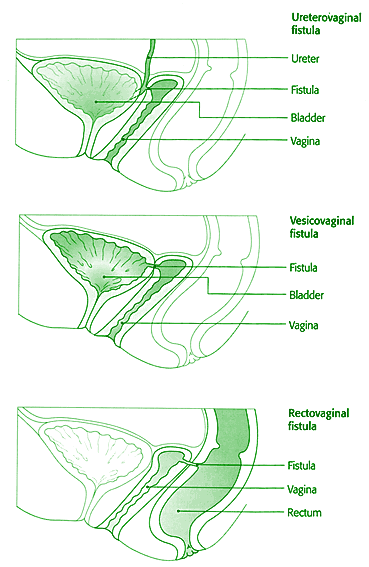|
Fistulae
• A ureterovaginal fistula is an opening between one of the ureters
and the vagina. It usually results from surgery and it causes urine
to leak through the vagina. Initially it may be treated by passing a
tube, or stent, into the ureter. If it does not close over, it is repaired
through the abdomen by joining the healthy ureter above the fistula
to the bladder.
• A vesicovaginal fistula is an opening between the bladder and
the vagina, and causes urine to leak from the vagina. It can occur as
a result of tumour invasion, after surgery or, particularly, after radiotherapy.
It may be repaired though the vagina or by a cut in the abdomen, and
the vagina may need to be closed. A piece of tissue may be removed from
the labia or from inside the abdomen, and used to separate the bladder
and vagina to prevent the fistula from returning. If the fistula is
caused by tumour recurrence, repair is not possible, but incontinence
can be cured by a urinary diversion. This involves making an opening
in the abdominal wall so that the urine can be collected in a bag outside
the body.
• A rectovaginal fistula is an opening between the rectum, which
is the bottom part of the large bowel, and the vagina. As a result,
the contents of the bowel can pass out of the vagina, causing a distressing
discharge. Repair may be possible, but if not, a colostomy will overcome
the problem. This involves making an opening in the abdomen so that
the contents of the bowel can be collected outside the body in a stoma
bag.
|
|
 |




